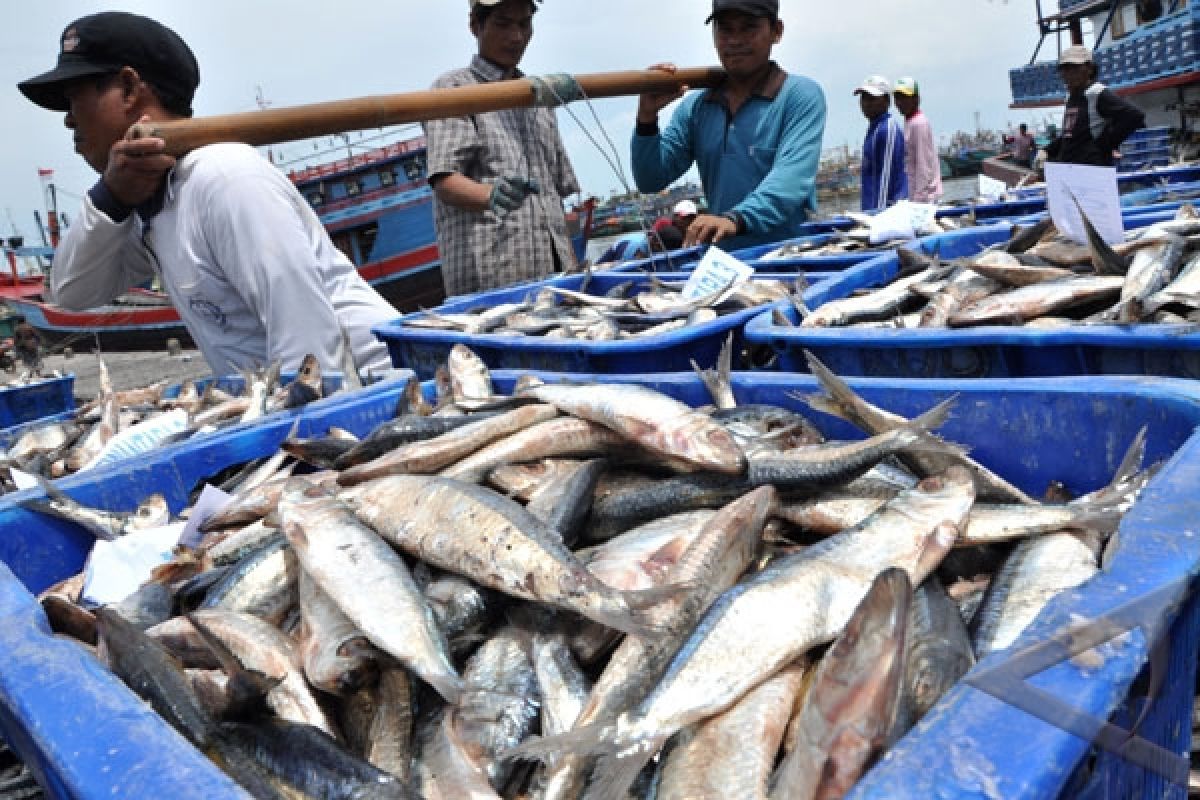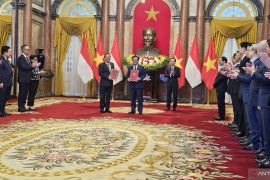In an effort to increase the country`s fish production, the Maritime Affairs and Fisheries Ministry is to focus on development of Minapolitan areas (fishery-based development cities) in 41 Indonesian regions this year.
"In 2011, the ministry is to focus on formation of Minapolitan areas consisting of nine fishing based sites, 24 aquaculture sites, and eight central salt sites," said Maritime Affairs and Fisheries (KKP) Minister Fadel Muhammad during the ministry`s 2011 outlook meeting recently.
The minister said the fish production target set for 2010 was achieved, both from catching and aqua-culturing activities. "Fish production from catching and culturing operations amounted to 10.83 million tons in 2010, surpassing the target of 10.76 million tons for the year," he said.
He said the cultured fish sector had become the weighed-in target achievement last year as production growth in the 2006-2010 period had increased 19.56 percent, compared to growth of the production of catching operation in the same period which was recorded at 2.78 percent.
According to KKP Sokesman Yulistyo Mudho, the country`s per capita fish consumption in 2010 was recorded at 30.47 kg per annum, an increase from 29.08 kg in 2009.
"The increase in the people`s fish consumption helped improve the people`s intelligence level and utilize national fish production which is set to reach 22.39 million tons in 2014," Mudho quoted Fadel Muhammad as saying.
For this purpose, the maritime affairs and fisheries minister had set a target for fish production in 2011 at 12.26 million tons. This figure constituted an increase of 13 percent of the 2009 production which was 10.85 million tons.
"We hope production increase would be followed by increase in per capita fish consumption," he said.
As of the animal proteins, fish owns several particularities compared with those of other animal proteins. It has relatively safe nutritional contents for humans consumption from children of under five years old until senior citizens. It contains Omega 3,6 and 9, which are good for infant development so that children would become more active and intelligence. It also develop stronger stamina for people who consume fish.
"Cooking fish would not also need much energy. The different species of fish provide people of different layers with different choices in consuming fish," Mudho said.
The KKP ministry has formulated steps for increasing fish production. It is now focusing the development of fish in many locations.
The fishing based sites are located in Pelabuhan Ratu, Tamperan Muncar Ternate, Sungai Liat Nusantara Fishery Ports (PPN), Cilacap Bitung, Belawan and Ambon Ocean Fishery Ports (PPS).
There are other 24 pilot aquaculture based Minapolitan located inMuoro Jambi, Kampar, Bogor, Banyumas, Blitar, Gunung Kidul, Morowali, Sumbawa, Sumba Timur, Banjar, Pohuwato, Boyolali, Klaten, Gresik, Lamongan, Serang, Maros, Pangkep, Pesawaran, Bintan, Bangli, Musi Rawas, Pandeglang and Kapuas.
Besides the ministry is also designing a Mega-Minapolitan project in Morotai, North Maluku, in which Taiwan reportedly is interested in developing the island as the center of the largest fisheries for aquaculture and fisheries.
Mega-Minapolitan project is a large scaled Minapolitan where Major investors will get a number of conveniences and amenities.
The development of Minapolitan will constitute a major breakthrough in the development of cultured fish. Minister Muhammad said cultured fish production in 2010 also gained a milestone where it had contributed 50.5 percent of the total production for the first time.
Apart from production, the contribution of fishery sector on the gross national product until the 2010 third quarter had come to 3.14 percent, above the set target of 3.0 percent for the year.
Whereas the value of fishery export up to December 2010 was recorded to be 2.66 billion US dollars, or an increase of 8.05 percent compared to 2.46 billion US dollars in 2009. The target in this sector was not achievable due to various factors affecting production, including diseases in shrimp production and climate change.
The fishery sector had generally produced a surplus of 2.3 billion US dollars in 2010, an increase of 7.06 percent compared to 2009, he said.
The ministry has also set other marine and fisheries sector development goals in 2011 such as to contribute 3.5 percent fishery for the national GDP, 12.26 million tones fishery production (5.41 million tons of fishing and 6.85 million tons of cultivation), and the 3.2 billion US dollars value of fishery exports.
Another target is to have 449 units of certified Fish Processing Units (UPI), 112 fishermen exchange values (NTN), 0.9 million hectares of sea and waters conservation area, to manage some 30 outermost small islands, and 75 percent of free illegal fisheries management areas.(*)
A014/HAJM
Reporter: Andi Abdussalam
Editor: Jafar M Sidik
Copyright © ANTARA 2011












